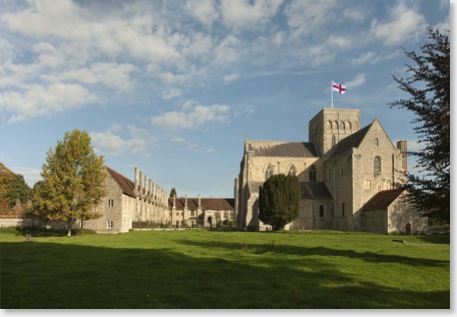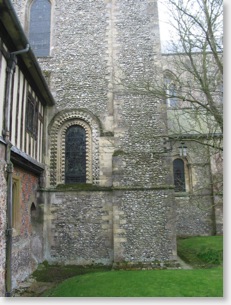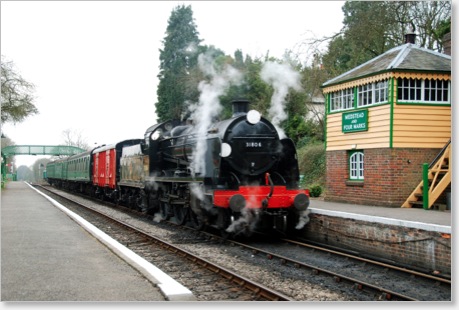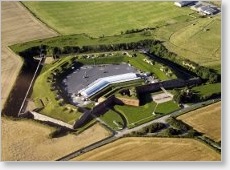Study tours
10.00am Study tours depart Winchester Royal Hotel. Bags can be left at the Hotel for later collection
The Hospital of St Cross
The Hospital of St Cross and the Almshouse of Noble Poverty, Winchester
Saturday 23 June 2012 10:00-14:00
 The Hospital of St Cross, which is England's oldest continuing almshouse, comprises a group of grade I listed medieval and Tudor buildings, including a medieval hall and tower, Tudor cloister, 12th century church and gardens reflecting a seventeenth century connection with North America. The term ‘Hospital’ is understood as hospitality, in this context, as for over 850 years St Cross has provided food and shelter to people in need. It has been home to the Master and Brethren of St Cross since medieval times and we hope to receive the Wayfarer's Dole (a small beaker of beer and a morsel of bread). We may be lucky enough to meet one of the resident Brothers too, in his black or red gown and trencher hat, on his way to Matins.
The Hospital of St Cross, which is England's oldest continuing almshouse, comprises a group of grade I listed medieval and Tudor buildings, including a medieval hall and tower, Tudor cloister, 12th century church and gardens reflecting a seventeenth century connection with North America. The term ‘Hospital’ is understood as hospitality, in this context, as for over 850 years St Cross has provided food and shelter to people in need. It has been home to the Master and Brethren of St Cross since medieval times and we hope to receive the Wayfarer's Dole (a small beaker of beer and a morsel of bread). We may be lucky enough to meet one of the resident Brothers too, in his black or red gown and trencher hat, on his way to Matins.
Aspects of the School’s theme “Significance: who decides?” will be teased out during a tour of the site led by Dr John Crook, author of many books including The Hospital of St Cross and Almshouse of Noble Poverty (2011). He is an archaeological consultant, buildings historian, and architectural photographer. John Crook contributed to the Winchester section of the recent ‘Buildings of England - Hampshire : Winchester and the North’ by M. Bullen, John Crook, Rodney Hubbuck, and Nikolaus Pevsner (2010). http://www.john-crook.com/
Lunch will be provided exclusively for us in the tea rooms at the conclusion of this walking tour which also coincides with the end of the IHBC Annual School 2012. Please note that it takes 20 minutes to walk from the Winchester Royal Hotel to St Cross. There is no parking available on site except for a limited number of disabled parking spaces if required. Should the weather be kind you may want to stroll back along the water meadows and the River Itchen.
Numbers are limited.
Alresford
 Travel by vintage coach to the Mid Hants railway, the Watercress Line where there will be the option of either taking a train ride on the Watercress Line or a guided walk around the town of Alresford. New Alresford is described in the latest North Hampshire edition of Pevsner's "Buildings of England" as "the most consistently rewarding 18th century townscape in the whole of North Hampshire". Short talks will be heard about the acquisition and maintenance of the trackside buildings and the impact of the railway on the local watercress industry.
Travel by vintage coach to the Mid Hants railway, the Watercress Line where there will be the option of either taking a train ride on the Watercress Line or a guided walk around the town of Alresford. New Alresford is described in the latest North Hampshire edition of Pevsner's "Buildings of England" as "the most consistently rewarding 18th century townscape in the whole of North Hampshire". Short talks will be heard about the acquisition and maintenance of the trackside buildings and the impact of the railway on the local watercress industry.The Watercress Line is a historic preserved railway. Part of the line is known as "The Alps" due to its (relatively) steep gradient. The "Mid-Hants Railway Ltd." opened the line in 1865, and it was closed in 1973. It re-opened in 1977 as the "Watercress Line" with a mixture of steam and diesel locomotives and a 10 mile section of line. In 2008 it received a grant of £550,000 from the Heritage Lottery Fund for various improvement projects. It runs regular services throughout the year, and we will be offering the option of a ride on one of their regular Saturday morning services to Alton via Ropley, where the rolling stock is maintained and repaired.
Fort Nelson
Meet the Curator of Artillery to view the 1860s fort which is a scheduled ancient monument and a Grade I listed building. Built in the1860s it is one of five defensive forts on the summit of Portsdown Hill overlooking the Meon Valley to the north and Portsmouth Harbour to the south. The tour will explore the significance of the fort from it's inception as a defence against a possible French invasion, through two World Wars, until the present day.
 The fort was never needed for it's original purpose and since the guns face inland Fort Nelson was known locally as a ‘Palmerston’s Folly’. It was adapted to serve through two World Wars and beyond. At the time of listing in 1971 the fort was an overgrown, burnt-out ruin, Hampshire County Council bought the fort in 1979 and with the Palmerston Forts Society began to conserve it. The Royal Armouries Museum at Fort Nelson first opened in 1995 and have recently completed a multi-million pound redevelopment to form new galleries, café, visitor centre and classrooms.
The fort was never needed for it's original purpose and since the guns face inland Fort Nelson was known locally as a ‘Palmerston’s Folly’. It was adapted to serve through two World Wars and beyond. At the time of listing in 1971 the fort was an overgrown, burnt-out ruin, Hampshire County Council bought the fort in 1979 and with the Palmerston Forts Society began to conserve it. The Royal Armouries Museum at Fort Nelson first opened in 1995 and have recently completed a multi-million pound redevelopment to form new galleries, café, visitor centre and classrooms.
The tour will consider the impact on historic significance from the economic considerations of providing a long term sustainable use for the SAM and Grade I listed structures.
Links
Royal Armouries: http://www.royalarmouries.org/visit-us/fort-nelson/the-story-of-fort-nelson
Pevsner: (Hampshire and the Isle of Wight (2002) edition) Portsdown Hill Pg 387.

The tour will consider the impact on historic significance from the economic considerations of providing a long term sustainable use for the SAM and Grade I listed structures.
Links
Royal Armouries: http://www.royalarmouries.org/visit-us/fort-nelson/the-story-of-fort-nelson
Pevsner: (Hampshire and the Isle of Wight (2002) edition) Portsdown Hill Pg 387.
2.00pm Return to Hotel from Study tours. Annual School finishes and delegates disperse
